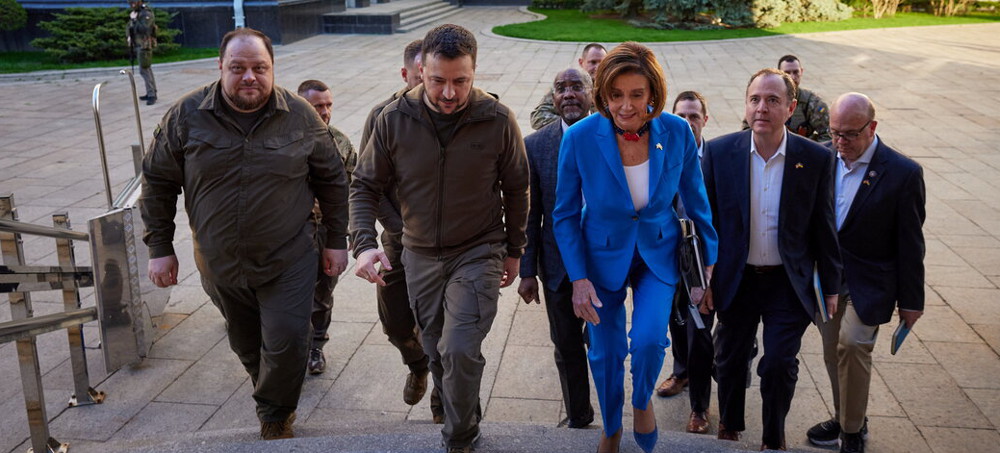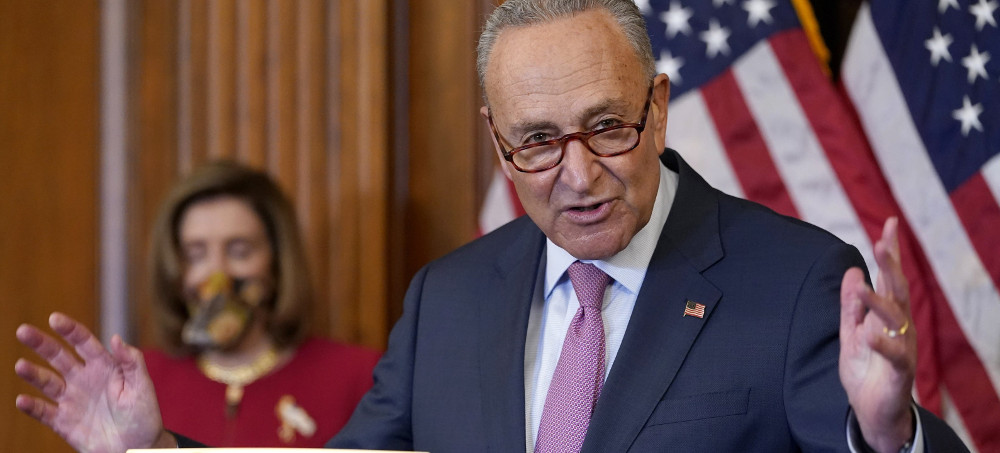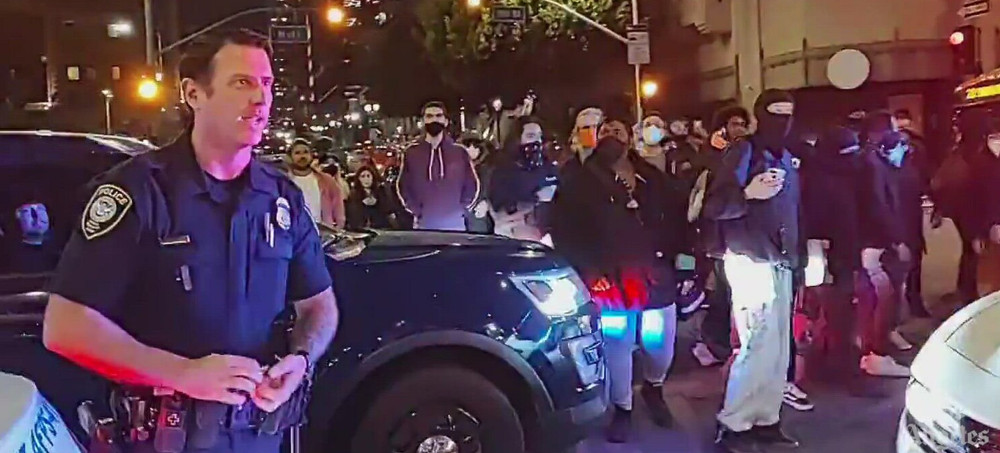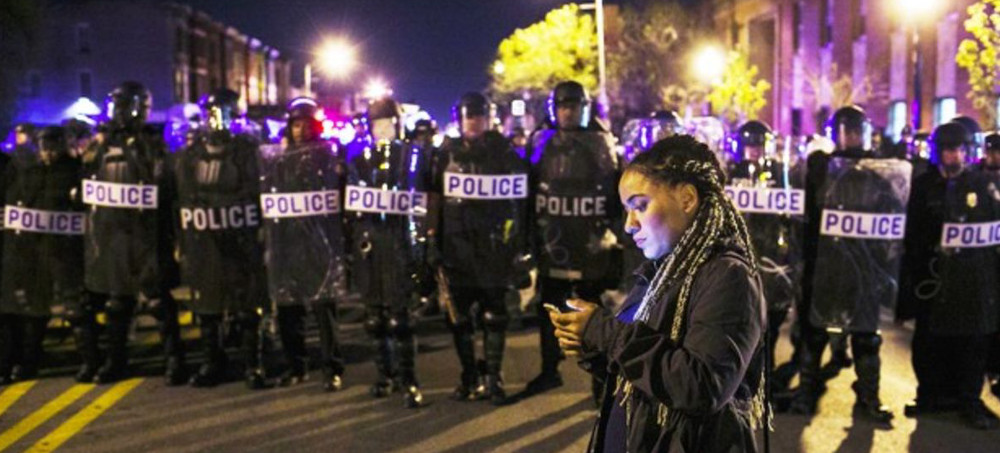Live on the homepage now!
Reader Supported News
Coverage of and commentary about the war by American progressive commentators can trend pretty Russia-friendly, that’s no mistake. There are a cadre of American progressives who have fairly close ties to Russia, take their cues from Russia and are conspicuously disciplined about staying on message.
The memes are familiar at this point. The US encouraged the Ukrainian resistance, the US does it too, (presumably what the Russians are doing), the US and the Ukrainians should be negotiating with Russia, Russia is being encircled and genuinely fears for its security and of course that any meaningful resistance to the Russian invasion of Ukraine risks, even invites nuclear war. There are subplots but those are the main talking points.
Our coverage, as many of our readers may now be aware has been quite a bit more open to and supportive of Ukrainian perspectives and more importantly, attuned to the suffering of the Ukrainian people. That’s not a mistake either. To begin it is important address the “America is responsible” argument on its own merits and as it relates to our coverage of the conflict.
To say that Ukrainian resistance to being invaded by Russia is the fault of NATO or America ignores the immense sacrifice the Ukrainians are making in their struggle for their homeland, their independence, their cultural heritage, their right to self determination and their very lives. That struggle is nothing short of legendary. It would be fairer to say, the Ukrainians are leading America and the West than being led by them.
In terms of RSN’s perspective when covering American foreign affairs, we have a long track record. Our DNA can be traced back to the early days of Truthout. Truthout launched shortly before the US invasion of Iraq. We were staunch opponents of that war and the misguided US aggression behind it. Truthout was perhaps the most consistent and effective critic of the war. We stood toe-to-toe with Bush administration officials and drew their ire for doing so. We have been consistently opposed to US colonialism, interventionism and war profiteering throughout our entire publishing history. “Military aggression is bad for humanity and bad for the earth.” That was our position then and it is our position today.
There are some significant similarities between the 2003 US invasion of Iraq and the 2022 Russian invasion of Ukraine. Both were totally illegal, totally immoral, utterly brutal and in each case highly detrimental to global security. The main difference in considering the Russian assault on Ukraine is the deliberate nature of the war crimes being committed against innocent civilians and the scope of the atrocities. The US did commit atrocities against Iraqi civilians but the sheer volume of Russian atrocities in Ukraine is unparalleled in modern times.
Not since World War II has the world seen the scope of destruction we are seeing in Ukraine. A major component of the Russian strategy in their war on Ukraine is the direct, highly intentional targeting of civilian infrastructure and civilians themselves. The Russians see this targeting as helping to achieve their war objectives. The objective being to subjugate Ukraine to Russian domination. The scope is unimaginable. City after city flattened, reduced to rubble, it is Fallujah, Aleppo or Grozny multiplied a hundred times. From the perspective of RSN’s coverage, in 22 years of covering war zones around the world we have never seen a conflict where the impact on civilians and civilian infrastructure came anywhere rivaling what we are seeing in Ukraine.

The purpose of intentional civilian slaughter is terrorism in its purest form. The Russians are losing on the battlefield and what they are saying to the Ukrainian fighters is, if we cannot beat you militarily we will simply destroy your communities and kill your families.
By Russian estimates over 1.2 million Ukrainian civilians men, women and children have been “evacuated” from Ukraine to Russia to what Russians are calling, “filtration camps.” Not since literally the roundup and deportation of European Jews and other groups to Nazi concentration-extermination camps during World War II has the world seen anything like this. It is a humanitarian catastrophe of unimaginable proportions and it is mounting by the hour.
This does not even take into consideration the enormous impact the war is having on global food security in nations dependent upon crops grown in Ukraine. In all likelihood the impacts of this war would bring about the deaths of millions worldwide from starvation if allowed to continue. Even if it stopped today the disruption of food supplies has already accelerated to a critical level, and the impacts of food shortages are already being felt.
There are a number of geo-political plots and theories swirling around who is to blame for this war. From our perspective Russia invaded Ukraine and Russia is causing the horrific effects on the Ukrainian civil population. Our coverage will focus on the plight of the civilians being subjected to this horror. We are inspired by the indomitable spirit of the Ukrainian people who are suffering unimaginable loss, with an eye to their physical and spiritual survival.
Marc Ash is the founder and former Executive Director of Truthout, and is now founder and Editor of Reader Supported News.
Reader Supported News is the Publication of Origin for this work. Permission to republish is freely granted with credit and a link back to Reader Supported News.
 Nancy Pelosi, the speaker of the House, led a congressional delegation to Kyiv, becoming the highest-ranking U.S. official to meet with President Volodymyr Zelensky since Russia's invasion of Ukraine. (photo: AP)
Nancy Pelosi, the speaker of the House, led a congressional delegation to Kyiv, becoming the highest-ranking U.S. official to meet with President Volodymyr Zelensky since Russia's invasion of Ukraine. (photo: AP)
The Democratic party is encouraging president to be more forward-leaning as he broadened US objectives in the conflict
In his approach to the conflict, Joe Biden, has the wind at his back in terms of US public opinion and Democratic party sentiment which is encouraging him to be ever more forward-leaning.
In a new poll conducted by the Washington Post and ABC News, 37% of Americans questioned said his administration was not doing enough to support the Ukrainians, fractionally more than the 36% who said he was doing the right amount. Only 14% suggested he was doing too much.
Late last month, the administration broadened US objectives in the conflict, to not just support Ukrainian sovereignty and territorial integrity but also to weaken Russia, with the aim of preventing a repeat of Moscow’s aggression against other countries.
A European diplomat suggested that one of the factors behind that shift was impatience in the higher levels of the party with the administration’s posture.
“It’s fundamentally about trying to get on the front foot in this crisis. There’s a lot of domestic criticism of the administration for being so passive,” the official said.
“The Hill [Congress] are cross and a lot of the big Democratic donors think it’s not being as forthright as America should be … Biden thinks he’s treading a careful path between intervention in its broader sense and keeping the focus on domestic concerns – and some Democrats are starting to think that balance isn’t right.”
Senator Chris Coons, a senior figure in Democratic foreign policy circles, has criticised Biden for taking direct military intervention off the table as an option. On the other side of the party, there has been little pushback from the progressive wing, which is normally sceptical about sending large quantities of military hardware into foreign conflicts.
And for once in Washington, the Republicans are pushing in the same direction.
“This is one of the few areas where Democrats and Republicans are reasonably well united and that makes it pretty easy for a president to move in that direction. He’s not making enemies,” said Larry Sabato, politics professor at the University of Virginia.
“The umbrella over all of this is the moral issue and the powerful video of Ukrainians being slaughtered and dislocated,” John Zogby, a pollster and political consultant, said. “Americans are moved by that and overwhelmingly support the Ukrainian people.”
It is nonetheless a political wedge issue. Support is more uniform among Democrats than Republicans. Donald Trump transferred his personal admiration for Vladimir Putin to at least some of his followers and the Fox News commentator Tucker Carlson, who has consistently raised pro-Moscow talking points on his show.
Democratic support is deepened by the important role of Ukrainian-Americans, thought to represent about 1 million people (Zogby thinks that is an underestimate) and who are influential on the party’s ethnic coordinating council. They have all the more sway because they are concentrated in swing states.
“You’ve got a decent number of Ukrainians in Ohio, and you have a Senate race in Ohio. There are Ukrainians in Pennsylvania and you have a Senate race in Pennsylvania,” said Wendy Schiller, political science professor at Brown University.
In Wisconsin, Democrats have been running ads against the incumbent Senator Ron Johnson, focusing on his 2018 visit to Moscow.
“It’s not an accident that Nancy Pelosi went to Ukraine,” Schiller said. “To have the speaker go, it says this is going to be an issue that the national party is going to take into the midterm elections.”
With state-level and national politics, moral outrage among the public and Biden’s own foreign policy instincts, all pointing in the same direction, the administration has sharply raised its stake in the Ukraine conflict, asking Congress for an extraordinary $33bn in military, economic and humanitarian support for Kyiv.
Public support, however, dies away dramatically when it comes to the question of sending US troops. Only 21% asked in this week’s poll backed such direct intervention, and concern about Ukraine escalating into a nuclear conflict is significantly higher among Democrats than Republicans.
Biden, who has made extricating the US from “forever wars” his signature foreign policy, has repeatedly said he will not send US troops into Ukraine, and has cancelled routine missile tests to reduce any risk of misunderstanding and miscalculation between the two nuclear superpowers.
“Boots on the ground may very well be a very different story,” Zogby said. “I don’t think world war three polls very well.”
 Senate Majority Leader Sen. Chuck Schumer. (photo: AP)
Senate Majority Leader Sen. Chuck Schumer. (photo: AP)
The filibuster is a Senate rule that requires 60 votes to pass most legislation. Most controversial legislation is passed on party-line votes these days, and it’s very rare for parties to have 60 senators. Democrats only have 50 right now.
Here’s what the filibuster means for federal abortion rights — and how it could be manipulated by either side.
Will Democrats get rid of the filibuster to pass abortion protections?
Probably not.
In the Senate, Republicans can and will stop Democrats from codifying abortion rights. They already did so with a bill Democrats voted on in February.
Democrats can get rid of the filibuster, or make a carve-out for abortion-related issues, with just a majority vote. After Politico published a draft Supreme Court opinion indicating that Roe will be overturned later this spring, Sen. Bernie Sanders (I-Vt.) almost immediately called for Democrats to do that.
But there are two reasons Sanders’s proposal is unlikely:
- Democrats don’t have 50 votes among themselves to change the filibuster for abortion. Democratic Sens. Joe Manchin III (W.Va.) and Kyrsten Sinema (Ariz.) explicitly said this week that they opposed changing the filibuster for abortion. The two blocked Democrats’ effort a few months ago to eliminate the filibuster to pass voting rights legislation. “The filibuster is the only protection we have in democracy,” Manchin told reporters this week. “We’ve protected women’s rights with the filibuster.” Sinema called the filibuster and other Senate rules “more important now than ever.”
- Manchin doesn’t support codifying Roe v. Wade into law anyway; he is one of the few remaining Democrats in Congress who doesn’t support abortion rights. (Sinema does.) So even if Democrats could eliminate the filibuster for abortion, they probably wouldn’t have the votes to expand federal abortion protections.
Despite knowing a vote to extend federal abortion protections will fail, Senate Democrats will hold one next week. When asked Thursday by reporters if Democrats would be willing to get rid of the filibuster to pass this legislation, Senate Democratic leaders didn’t answer. “We’re having a vote next week,” Senate Majority Leader Charles E. Schumer (D-N.Y.) told reporters. “We’ll see where everyone stands.”
What about Republicans who support abortion rights?
There are two in the Senate: Susan Collins of Maine and Lisa Murkowski of Alaska. They voted for most of Donald Trump’s nominees to the Supreme Court, and they made pretty clear this week that they wouldn’t be happy if those justices now voted to overturn Roe v. Wade. Collins didn’t mince words in her statement about the two Trump-nominated justices she voted for: “If this leaked draft opinion is the final decision and this reporting is accurate, it would be completely inconsistent with what Justice Gorsuch and Justice Kavanaugh said in their hearings and in our meetings in my office.”
So if Democrats somehow managed to get rid of the filibuster for abortion, would an aggrieved Collins and Murkowski join them to support federal abortion protections? Probably not.
As The Post’s Mike DeBonis and Seung Min Kim report, both senators voted against a Democratic bill in February to protect the right to have an abortion up to about 24 weeks, which is what Roe does. They offered a narrower bill extending some abortion protections, but Democrats feared it would still allow 15-week bans, like the Mississippi law at issue in the Supreme Court’s current case. Like most attempts at compromise on such a divisive issue, Collins’s and Murkowski’s bill has no public support in the Senate from either side.
On Thursday, Collins reaffirmed she doesn’t support a national bill essentially keeping Roe in place. She argues it would supersede state laws in ways she’s not comfortable with.
Could Republicans curb the filibuster to ban abortion?
Let’s talk about the flip side: Republicans regaining power and carving out an exception to the filibuster to pass a nationwide abortion ban. The Post’s Caroline Kitchener reports that some congressional Republicans are working with antiabortion activists on this, in anticipation of Republicans possibly taking back control of both chambers of Congress in November’s midterm election.
It is possible that Republicans would vote to get rid of the filibuster to ban abortion, but it doesn’t look likely right now. Senate Minority Leader Mitch McConnell (R-Ky.) reiterated his support for the filibuster this week. He left himself very little wiggle room to change his mind. “We don’t want to break the Senate,” he said of getting rid of the filibuster, even just for one issue. “And that’s breaking the Senate.”
Both Democrats and Republicans slashed the filibuster for presidential appointments — under McConnell, Republicans voted to end the filibuster for Supreme Court nominees so Trump could put his picks on the court over Democratic objections.
But McConnell and Republicans have vociferously criticized Democrats’ attempts last year to alter the legislative filibuster. If Republicans changed the rule to pass an abortion ban, Democrats could throw their language right back in Republicans’ faces.
And it would take a lot of effort to pass a nationwide ban when the Supreme Court already undid the only nationwide protection for abortion, opening the door for states to set their own policies.
 Austin Hopp, a former officer with the Loveland Police Department in Colorado, pleaded guilty to charges related to the 2020 arrest of Karen Garner. (photo: The Life and Liberty Law Office)
Austin Hopp, a former officer with the Loveland Police Department in Colorado, pleaded guilty to charges related to the 2020 arrest of Karen Garner. (photo: The Life and Liberty Law Office)
Austin Hopp, a former officer with the Loveland Police Department in Colorado, pleaded guilty to charges related to the 2020 arrest of Karen Garner.
Austin Hopp, a former officer with the Loveland Police Department, appeared in a Larimer County court after he pleaded guilty to charges related to the June 26, 2020, arrest of Karen Garner.
A federal lawsuit said police slammed Garner, who was 73 at the time, to the ground and hogtied her.
State District Judge Michelle Brinegar said Hopp used his "position of power and authority to show off his toughness, disregard any sense of humanity, displayed an alarming degree of criminal thinking and caused a great deal of harm and trauma."
"This case is not about a mistake," she said before she handed down the sentence. "I do think you are sorry, but I don’t think you get it."
Hopp was also sentenced to three years of mandatory parole.
Garner was arrested after she was accused of stealing about $14 worth of items from a Walmart. An attorney for Garner said she has dementia and sensory aphasia, which impairs her ability to verbally communicate with people or understand others’ communications. The attorney said that because of the dementia, Garner forgot to pay for the items, which were retrieved by Walmart employees.
Body camera video released by the attorney showed Hopp telling Garner to stop and talk to him as she walked home. Garner was seen on the video shrugging her shoulders as she continued to walk.
Hopp then roughly took Garner to the ground and placed her in handcuffs, the video showed. A second officer, Daria Jalali, arrived and assisted as Hopp walked Garner toward a police car. The video showed them struggling to get Garner in the back of the car. Hopp, according to the video, told Jalali to help him get Garner on the ground. He then hogtied her by the ankles and forced her into the car, the video showed.
Garner suffered a dislocated shoulder, a fractured arm and a sprained wrist, according to the lawsuit, which the city settled in September for $3 million.
A second video released by the attorney showed Hopp and other officers at the police station laughing and joking about the arrest. He accepted a plea deal in March for the assault charge, which Garner’s family opposed.
Garner’s son, John Steward, addressed the court before the sentence was announced. He said Hopp “never even took a moment to ask questions or assess the situation."
“Instead of assessing the situation further, he immediately grabbed her arm behind her back and threw her to the ground," Steward said. "That’s not ever how I should see my mom being treated."
Steward called Hopp "callous" and said he was "insensitive" for joking about the arrest. "He took pride in humiliating my mom," he said.
Hopp apologized to the Garner family, saying he was "truly sorry."
"I made a terrible mistake that day," he said.
Hopp left the police department in April 2021. Two other officers, Jalali and Tyler Blackett, also left the department. Police did not specify whether they resigned or were fired.
Jalali was also charged with official misconduct and failing to stop or report Hopp's actions. Her next court date is June 22, NBC affiliate KUSA of Denver reported.
ADDED:
Karen Garner's lawyer released a new video she said shows the officers
knew of her injuries at the time of her arrest and neglected to provide
medical attention.
The lawyer for Karen Garner, the 73-year-old Loveland woman forcibly arrested last year by Loveland police, has released a new video that she said shows the officers involved neglected to provide Garner with medical attention despite knowing she was injured. Editor's Note: Video was provided by Garner's lawyer, who edited in the verbatim and the commentary at the bottom of the screen. 9NEWS has not been able to obtain the raw video.
 Activists accused Federal Agents of using aggressive crowd control measures against abortion rights protesters. (photo: Getty)
Activists accused Federal Agents of using aggressive crowd control measures against abortion rights protesters. (photo: Getty)
The SOS didn’t come from Los Angeles police officers, but a small group of federal officers with the Department of Homeland Security. They claimed, according to a statement by the LAPD, that they had come “under attack” from protesters while in their patrol cars near the intersection of 5th and Hill streets — about a half-mile away from the federal courthouse where the protest had begun and where federal officers have jurisdiction.
Video showed protesters banging on the officers’ cars and taunting them in a circle, and the officers shoving protesters and screaming at them to “back up.”
Some witnesses have accused the officers on social media of instigating the confrontation by straying beyond the courthouse, driving into the crowd and using aggressive crowd control measures. Regardless, it ratcheted up tensions between law enforcement and protesters at what until then had been an orderly demonstration over a draft Supreme Court opinion that, if adopted, would undercut abortion rights nationwide.
“I am confused as to why federal agents were out in Los Angeles doing crowd control during last night’s abortion rights protest?” activist and City Council candidate Albert Corado tweeted Wednesday, in response to a video of the encounter that has been viewed 3.5 million times.
A spokesman for the Federal Protective Service, an arm of Homeland Security to which the federal officers are assigned, referred questions from The Times to the main DHS public affairs office. In a statement Thursday, that office said DHS “strives every day to protect Americans’ freedom of speech and other fundamental rights,” and that the FPS “is conducting a review of this incident and the actions of any DHS personnel involved.”
In its own statement, the LAPD said the department had not requested assistance from Federal Protective Service during the protests and that its officers had not been working in conjunction with the federal officers who called for help.
The incident is the latest in recent years in which federal agents have stepped into and seemingly exacerbated tensions at protests in U.S. cities, where their role and legitimacy in enforcing laws are on shaky legal ground, according to legal scholars.
Activists and city officials have called out the presence of federal authorities at protests in Portland, Ore., Seattle and Washington, D.C. In one altercation that drew fierce condemnation from elected officials and others, federal agents used forceful measures to clear racial justice protesters and members of the media from Lafayette Park near the White House in 2020, as then-President Trump was staging a heavily criticized photo shoot at a nearby church.
Legal experts said Tuesday’s incident raised serious questions.
“What was the justification? What was the need for federal law enforcement officers to be deployed in that instance, where there appeared to be no threat to the federal courthouse?” said Jimmy Gurulé, a University of Notre Dame law professor and former undersecretary of enforcement at the U.S. Department of the Treasury, where he oversaw various federal law enforcement agencies.
“It’s a very fundamental and reasonable question, and if they can’t answer that question, then that raises some serious questions as to whether they were there to maintain the peace or to instigate.”
For part of Tuesday, federal officers were protecting the federal courthouse in the 300 block of W. First Street downtown, where protesters had gathered to denounce the draft Supreme Court opinion.
About 7:30 p.m., protesters moved from the courthouse toward Pershing Square — a shift LAPD officials said they discussed in advance with organizers of the protest and helped to facilitate by blocking traffic. Speeches were given in both locations.
Organizers declared the march over about 8:30 p.m., and the crowd began dispersing. Up until that point, there had been “no incidents of note,” the LAPD said.
The FPS officers were at the intersection of 5th and Hill streets by 8:40 p.m., when dozens of protesters were departing the park and spilling into the street. Some began banging on the hoods and trunks of the FPS officers’ cars.
Videos of the scene posted to social media, as well as statements from the LAPD and witnesses, show that LAPD officers took a more forceful stance after the FPS officers squared off with protesters. That, in turn, quickly escalated tensions further as protesters jeered at and taunted the officers and the officers screamed back, pushed people and hit them with their batons.
Videos posted online by Vishal Singh, who regularly chronicles protests in L.A., and other activists showed an FPS officer driving through a crowd of protesters into the intersection with the car’s sirens blaring. Another FPS officer then stepped out of a second patrol car in the intersection with his baton drawn.
“Back up,” the FPS officer said to protesters, a few dozen of whom can be seen in the video. The officer can then be seen shoving a protester backward after the person spoke to him.
“Back off,” the officer said. “Don’t do that, you understand me?”
More protesters moved forward at that point, yelling at the officer to back up.
Another video showed a different FPS officer moving through the same crowd, shoving people along the way to reach the side of the first officer and a few others, who had retreated a short distance toward a Metro bus in the street.
LAPD officers soon arrived in large numbers and a LAPD commander at the scene quickly declared the gathering unlawful. People were ordered to disperse and LAPD officers formed skirmish lines and began pushing through protesters to clear the street.
Amid the commotion, LAPD officers attempted to make at least one arrest. A video showed an officer chase and tackle one masked protester to the ground, but other protesters intervened, scuffling with officers as one swung at them with his baton.
Asked about that specific incident, video of which was posted to Twitter, LAPD officials said the officers “were attempting to effect the arrest of a vandalism suspect when people within the crowd attacked the officers and facilitated the suspect’s escape.”
They said the department has since launched a “use of force investigation related to the officer’s actions” in the incident and, therefore, could not comment on it further.
The LAPD did not respond to questions about other videos showing officers knocking over a protester’s wagon with a speaker in it, and officers pushing protesters in the street.
The situation quickly died down as protesters dispersed. A smaller crowd later roamed around downtown for a bit, causing minor damage to City Hall. The LAPD said it made no arrests.
After massive protests spiraled out of control in L.A. following George Floyd’s murder by Minneapolis police in 2020, multiple reviews found shortcomings in how the LAPD had responded. Top LAPD officials later expressed regret, saying they had learned lessons about how to better handle protests and would in some instances diminish their presence in part to avoid unnecessary clashes.
For much of Tuesday’s abortion rights protest, the LAPD had maintained a peripheral presence.
In response to questions about the presence of the federal officers Tuesday night, LAPD Chief Michel Moore said the agency is “working with our partners to ensure clear coordination” moving forward.
 A woman uses a cellphone as Baltimore police officers stand by during a protests connected to the death of Freddie Gray. (photo: Lucas Jackson/Reuters)
A woman uses a cellphone as Baltimore police officers stand by during a protests connected to the death of Freddie Gray. (photo: Lucas Jackson/Reuters)
If finalized, the leaked opinion, published by Politico on Monday, is expected to trigger a wave of expanded abortion restrictions across the country, which in turn could embolden authorities to step up legal demands for women’s personal data.
One major likely target is the information collected by Internet service providers, which privacy and civil liberties advocates say has historically been used by agencies to identify individuals, verify their location and connect them to relevant groups.
For women who may still seek abortions amid an expected wave of crackdowns later this year, that could mean that logging onto a health-care clinic’s WiFi or browsing related sites from your cellphone or desktop may create an opening for agencies to seize their data and mount a case.
“There's a long history of ISPs working relatively closely with law enforcement,” said Justin Brookman, director of privacy and technology policy at Consumer Reports.
Hayley Tsukayama, a senior legislative activist at the digital rights group the Electronic Frontier Foundation, said law enforcement agencies are no strangers to these practices, but may find additional ways to deploy them as states impose greater restrictions on abortions.
“It's probably less about them specifically gaining more access to some of these private companies or to be able to compel companies to turn over information,” said Tsukayama, a former technology reporter for The Washington Post. Since they already can access user data more broadly, they may use those tactics to obtain abortion data, she added.
The new rules will put a microscope on decisions by telecom giants, including AT…T, Comcast and Verizon, who may find themselves in a political minefield if pressed to fork over data from their customers to build an antiabortion case.
“It's very likely that we'll see more pressure on companies to turn over that data,” Tsukayama said.
That could put telecom giants squarely into the crosshairs of lawmakers in Washington who have typically focused more of their fury on technology giants like Google and Apple who will likely be facing their own data demands.
Cynthia Conti-Cook, a technology fellow at the Ford Foundation, said law enforcement agencies in the past have often used warrants for geofencing data — which can be used to link individuals to a specific location — to connect people to cases. It’s even been used commercially, she noted, including by advertisers targeting people at Planned Parenthood.
Another way in which law enforcement has used data from Internet service providers to build their cases, Conti-Cook said, is to collect information that can link an individual to a specific computer or IP address.
“It's very clear how probable and how accessible a lot of these tools are,” she said.
There are broad sources law enforcement agencies tap into to get data from suspects, including phone carriers, social media platforms, search engines and third-party data brokers. Privacy advocates said they are all likely to see more demands if Roe v. Wade is indeed overturned.
But Conti-Cook said connecting to the Internet through a personal device can pose unique risks because it can connect a web of people to an activity.
That could create heightened legal risks in states that seek to criminalize not only those who get abortions, but also those who provide them or facilitate the process, as Texas’s restrictive law has done.
“The level of risk that digital devices enter into any network that is supporting people, assisting people in seeking abortions, is that once one piece of the puzzle is in the hands of law enforcement … the potential to expose the network is there,” she said.
 For the first time in more than a century, endangered California condors soared over the redwood forests along the state's northern coast. (photo: Mark Miller/Getty)
For the first time in more than a century, endangered California condors soared over the redwood forests along the state's northern coast. (photo: Mark Miller/Getty)
The two birds, both males, were released from a pen in Redwood National Park on Tuesday morning, AP News reported.
“That was just as exciting as I thought it was going to be,” Yurok Tribe wildlife department director Tiana Williams-Claussen told Jefferson Public Radio. “Those guys just took right off.”
A video shared by the Yurok Tribe on Facebook shows first one and then the other bird emerging from the pen and launching themselves into flight.
The Yurok Tribe has spearheaded efforts to reintroduce the California condor to the northern part of its range. In 2021, the tribe announced a new condor release facility with the U.S. Fish and Wildlife Service and the National Park Service, with the goal of reintroducing the birds to Yurok Ancestral Territory and Redwood National Park. The Yurok Tribe considers the condors sacred, and the construction of the facility was the result of years of work on its part.
“For countless generations, the Yurok people have upheld a sacred responsibility to maintain balance in the natural world. Condor reintroduction is a real-life manifestation of our cultural commitment to restore and protect the planet for future generations,” tribal Chairman Joseph L. James said in a statement reported by AP News.
The two birds released Tuesday are nicknamed Poy’-we-son–which means “one who goes ahead” – and Nes-kwe-chokw’, which means “He returns” or “He arrives,” Williams-Claussen said in a message posted by the Yurok Tribe as a Facebook comment.
The name, she said, “is representative of the historic moment we just underwent, and condors’ return, free-flying, to the Yurok and surrounding landscape.”
The California condor almost went extinct in the 1970s because of poaching, habitat destruction and lead poisoning from eating animals killed with bullets, according to AP News. In the early 1980s, the 22 surviving wild condors were captured for a breeding program that has since successfully reintroduced the animals to Southern California. There are now more than 500 condors both in the wild and in captivity, and they now live along California’s Central Coast, as well as in Arizona, Utah and Baja California, Mexico.
Two more condors will be released over the northern redwoods if the birds released on Tuesday act in a normal way, as determined by biologists. The breeding program has three males and one female, all between two and four years old. Two hailed from the Oregon Zoo and two from Peregrine Fund’s World Center for Birds of Prey in Idaho. The program will release four to six birds a year for the next 20 years, according to Jefferson Public Radio.
“This is just incredible, exciting times,” Williams-Claussen told Jefferson Public Radio. “This has literally been my life’s work.”
While their populations are recovering, condors still face threats from lead poisoning and residual DDT in the environment. In 2020, a wildfire destroyed a condor sanctuary in Big Sur.
Special Coverage: Ukraine, A Historic Resistance
READ MORE
Follow us on facebook and twitter!
PO Box 2043 / Citrus Heights, CA 95611



No comments:
Post a Comment
Note: Only a member of this blog may post a comment.